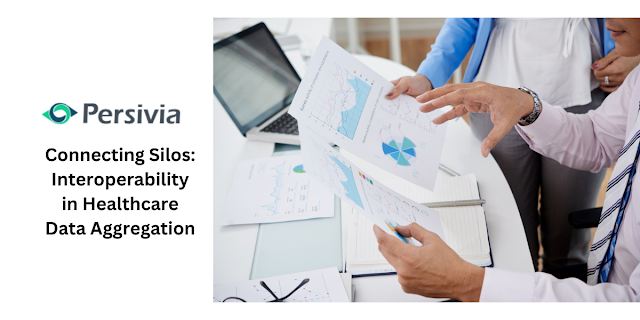connecting silos: interoperability in healthcare data aggregation
The need for efficient and seamless Healthcare Data Aggregation is paramount in the consistently growing landscape However, the presence of data silos poses a significant challenge to achieving a comprehensive view of patient information. Let’s explore the concept of interoperability here while emphasizing the importance of breaking down silos for better patient care.
Data Aggregation in Healthcare: An Overview
Health data aggregation involves the collection, integration, and analysis of diverse health-related information from various sources. This includes patient records, diagnostic results, treatment plans, and more.
Significance
- Holistic
Patient Understanding: Aggregating
data provides a holistic view of a patient's health history, enabling
healthcare professionals to make informed decisions.
- Improved Diagnostics and Treatment: Access to comprehensive data supports accurate diagnostics and personalized treatment plans, leading to better outcomes.
The Challenges: Silos in Healthcare Data
Data silos refer to isolated repositories of information within healthcare systems that hinder seamless data exchange. Common silos include EHRs, laboratory systems, and billing platforms.
Implications
- Fragmented
Patient Records: Silos
lead to fragmented patient records, making it challenging to create a
unified health profile.
- Inefficiencies and Delays: Healthcare providers face inefficiencies and delays in accessing critical information due to disparate data sources.
Interoperability: A Solution to Silos
Interoperability is the ability of different healthcare systems and applications to communicate, exchange data, and use the information to provide coordinated and efficient care.
Key Components
- Standardized
Data Formats: Adopting common data formats,
such as HL7 FHIR, ensures consistency and compatibility across diverse
systems.
- API
Integration: Application Programming
Interfaces (APIs) facilitate real-time data exchange between disparate
systems, promoting seamless interoperability.
- Data Governance: Establishing clear data governance policies ensures the secure and ethical use of aggregated data.
Implementing Interoperability in Healthcare Data Aggregation
Collaborative Initiatives
- Government
Initiatives: Governments play a crucial role
in fostering interoperability through policies and incentives.
- Industry Collaboration: Healthcare organizations collaborate with technology providers to create standardized solutions for data interoperability.
Technological
Advancements
- Blockchain
Technology: Utilizing blockchain ensures
secure and transparent data sharing, enhancing trust among healthcare
stakeholders.
- Artificial Intelligence (AI): AI-driven algorithms aid in the seamless integration and analysis of vast datasets, improving the efficiency of health data aggregation.
Takeaway
All in all, addressing
the challenges of data silos through blending Healthcare Data Aggregation and
interoperability is crucial for delivering optimal patient care.
To learn more, reach out
to Persivia. Connect with our
experts and get your data silos organized like never before with our Healthcare Data Platform!



Comments
Post a Comment
Please do not enter any spam link in the comment box